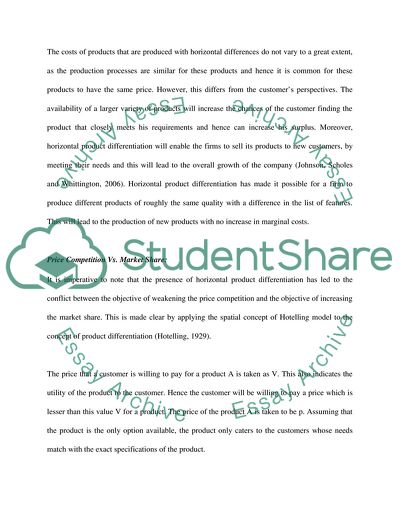Cite this document
(Horizontal Product Differentiation Essay Example | Topics and Well Written Essays - 1000 words - 1, n.d.)
Horizontal Product Differentiation Essay Example | Topics and Well Written Essays - 1000 words - 1. https://studentshare.org/marketing/1552492-in-the-presence-of-horizontal-product-differentiation-there-is-a-tension-between-the-desire-to-weaken-price-competition-and-the-desire-for-increased-market-share
Horizontal Product Differentiation Essay Example | Topics and Well Written Essays - 1000 words - 1. https://studentshare.org/marketing/1552492-in-the-presence-of-horizontal-product-differentiation-there-is-a-tension-between-the-desire-to-weaken-price-competition-and-the-desire-for-increased-market-share
(Horizontal Product Differentiation Essay Example | Topics and Well Written Essays - 1000 Words - 1)
Horizontal Product Differentiation Essay Example | Topics and Well Written Essays - 1000 Words - 1. https://studentshare.org/marketing/1552492-in-the-presence-of-horizontal-product-differentiation-there-is-a-tension-between-the-desire-to-weaken-price-competition-and-the-desire-for-increased-market-share.
Horizontal Product Differentiation Essay Example | Topics and Well Written Essays - 1000 Words - 1. https://studentshare.org/marketing/1552492-in-the-presence-of-horizontal-product-differentiation-there-is-a-tension-between-the-desire-to-weaken-price-competition-and-the-desire-for-increased-market-share.
“Horizontal Product Differentiation Essay Example | Topics and Well Written Essays - 1000 Words - 1”. https://studentshare.org/marketing/1552492-in-the-presence-of-horizontal-product-differentiation-there-is-a-tension-between-the-desire-to-weaken-price-competition-and-the-desire-for-increased-market-share.


